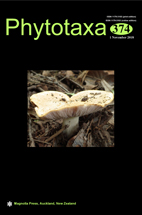Abstract
Lobelia macrocentron (Campanulaceae) was rediscovered when conducting floristic sampling for the Flora inventory of Santuario El Palmito, a natural protected area in the municipality of Concordia, Sinaloa, Mexico. The species was discovered 169 years ago by B.C. Seemann between 1849 and 1850, as part of one of the inland explorations of the Herald’s voyage. Seemann’s specimens served as the type and only known collection of the species. The locality of Seemann’s collections is imprecisely described, so that any search attempt would require an extensive exploration in portions of the states of Durango, Nayarit and Sinaloa, covering more than 350 km of Seemann’s route. Also, morphological variation of L. macrocentron was poorly understood as restricted by the only two available specimens. Consequently, we provide an extended description of the species, color plates with the first available photographs, and discussions about relationships, habitat and conservation status.

